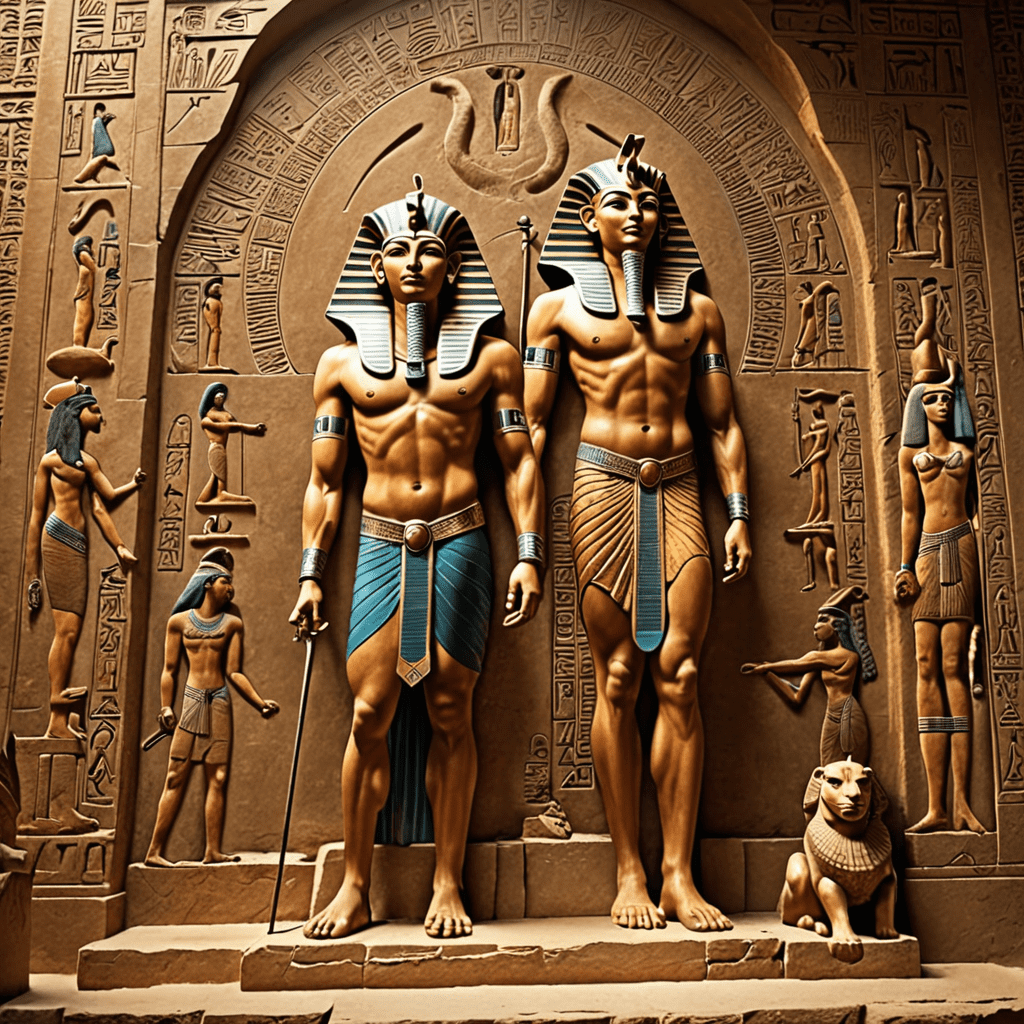The Role of Women in Flood Myths: Feminine Perspectives on Catastrophe
I. Introduction
Flood myths are ancient narratives found in various cultures that recount the story of a great deluge, often leading to the destruction of humanity and the subsequent rebirth of life. These myths hold significant cultural meaning, reflecting the values, fears, and aspirations of the societies that created them. This article focuses on the often-overlooked roles of women in these narratives, exploring how feminine perspectives contribute to our understanding of catastrophe and resilience.
Understanding the roles women play in flood myths is crucial, as these stories often highlight their power as creators, nurturers, and survivors. By examining these feminine perspectives, we can gain deeper insights into the relationship between gender and mythology, revealing how cultural narratives shape and are shaped by the experiences of women.
II. Historical Context of Flood Myths
Flood myths have been a part of human storytelling for millennia, appearing in diverse cultures across the globe. From the biblical account of Noah’s Ark to the Mesopotamian Epic of Gilgamesh and the Greek story of Deucalion, these tales share common themes of catastrophe, renewal, and the cyclical nature of life.
Notable flood myths include:
- Noah’s Ark: A biblical story emphasizing obedience and divine mercy.
- Epic of Gilgamesh: Featuring Utnapishtim, who survives a great flood sent by the gods.
- Deucalion and Pyrrha: Greek myths where a couple repopulates the earth after a deluge.
- Hindu mythology: The tale of Manu, who is warned by a fish to build a boat to survive a catastrophic flood.
These narratives often reflect a recurring theme: the catastrophic event leads to a rebirth, symbolizing hope and resilience in the face of disaster.
III. Women as Creators and Preservers in Flood Myths
In many flood myths, female figures emerge as vital creators of life following the devastation. They embody the principles of fertility and regeneration, often playing crucial roles in the survival of humanity.
Examples of women in these narratives include:
- Pyrrha: In the Greek myth, she and Deucalion are instrumental in repopulating the earth by throwing stones that transform into humans.
- Inanna: In Sumerian myths, she is associated with life, death, and rebirth, highlighting the cyclical nature of existence.
- Mother Goddess figures: Many cultures feature a mother goddess who oversees fertility and ensures the continuity of life.
The symbolism of motherhood and fertility becomes especially poignant in the aftermath of disaster, as women are often depicted as the bearers of new life, restoring balance and hope to humanity.
IV. The Archetype of the Heroine in Flood Narratives
Female protagonists in flood myths frequently exhibit unique characteristics that differentiate them from traditional male heroes. While male heroes often rely on physical strength or divine intervention, heroines are portrayed as resourceful, nurturing, and wise.
Key characteristics of heroines include:
- Resilience in the face of adversity.
- Emotional intelligence and empathy.
- Ability to forge connections and build community.
Case studies of specific heroines, such as Pyrrha in Greek mythology and Inanna in Sumerian tales, illustrate their journeys from loss to empowerment, showcasing their vital roles in the regeneration of society.
V. The Intersection of Gender and Nature in Flood Myths
Flood myths often reflect the complex relationship between women and nature. Female figures are frequently associated with the chaotic forces of nature, embodying both its destructive and nurturing aspects.
In these narratives, women are portrayed as:
- Victims of natural disasters, symbolizing vulnerability.
- Agents of change, capable of harnessing the forces of nature for regeneration.
- Representatives of the earth’s fertility, often linked to agriculture and sustenance.
This duality highlights the intricate connections between femininity and the natural world, underscoring how women’s experiences are intertwined with the cycles of nature.
VI. Cultural Variations in the Representation of Women
Women’s roles in flood myths vary significantly across cultures, shaped by historical, social, and environmental contexts. Comparative analysis reveals how different cultures represent women in their narratives, reflecting local beliefs and values.
For instance:
- In some Indigenous cultures, women are seen as central figures in creation stories, embodying the spirit of the land.
- In contrast, patriarchal societies often depict women as passive victims rather than active participants in survival and regeneration.
The impact of colonization and globalization has also altered these myths, often diminishing women’s roles or reshaping them to fit contemporary narratives.
VII. Modern Interpretations and Retellings
Contemporary literature and media have sought to reinterpret flood myths, often through a feminist lens. These modern adaptations challenge traditional narratives, highlighting women’s agency and resilience.
Feminist authors and creators have begun to reshape these stories, emphasizing:
- The importance of women’s voices in mythological storytelling.
- New interpretations that focus on female empowerment and solidarity.
- Insights from interviews with authors who seek to explore these themes in their work.
VIII. Psychological and Sociological Perspectives
The roles of women in flood myths provide significant psychological and sociological insights. These narratives often reflect societal attitudes toward gender, illustrating how women are perceived in times of crisis.
Psychologically, the portrayal of women in these myths can:
- Highlight resilience and adaptability.
- Challenge stereotypes of femininity and victimhood.
Sociologically, these myths can serve as reflections of contemporary gender roles, prompting discussions about women’s status in society during and after disasters.
IX. The Future of Women’s Narratives in Mythology
The portrayal of women in flood myths is likely to evolve as societal norms change. Social movements advocating for gender equality continue to influence mythological storytelling, pushing for more inclusive narratives.
Future shifts may involve:
- Greater emphasis on women’s roles as leaders and innovators in the face of catastrophe.
- Incorporation of diverse cultural perspectives that highlight women’s experiences.
- Challenging and reshaping traditional archetypes to reflect contemporary values.
By exploring and amplifying women’s narratives in mythology, we can foster a richer understanding of their roles in shaping cultural stories and the human experience.




